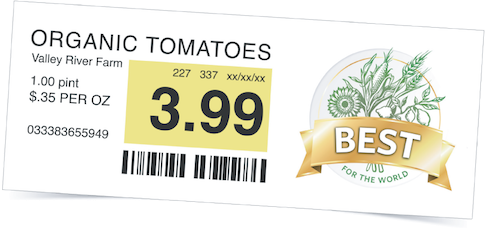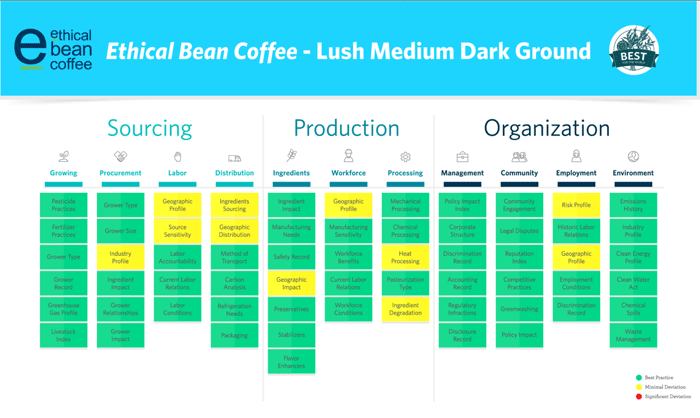For several years, a new program called HowGood started certifying “sustainable” food products as good-great-best.
Now they are becoming more visible.
You may have seen their ratings as shelf talkers in supermarkets, and they have 137,000 products on a cellphone app.

But what are they actually rating? And do these good-great-best ratings indicate the product is nontoxic?
HowGood evaluates products based on a grid of eleven categories having to do with sourcing, production, and organization. And each of these eleven categories has subcategories. Each gets a rating that results in a profile that looks something like this:
or
But the problem I have with this is, like virtually all other certification organizations, all you get is a seal and no details. If you click to the page and mouse over the green boxes on the second image, a window will pop up that gives you an explanation of the category, but no details on the product.
You can also go here to see the full grid and mouseover each square to see all the explanations, but I don’t see a page that fully explains any of them. When you look at these categories they cover toxic exposures but also labor, management, environment, and other factors. A product could rate high on management but low on toxics and still get a good rating. But I can’t analyze this because I have no data about how they came to these conclusions per product.
HOWGOOD’S “BEST” RATED BRANDS: here and here
THE BALTIMORE SUN: Supermarkets look to sustainability as the next organic
By contrast, I’ve been writing product recommendations at Debra Lynn Dadd Recommended Products that give you details on the company philosophy and each of the materials they use to make their products. I’d like to see more disclosure like this.





